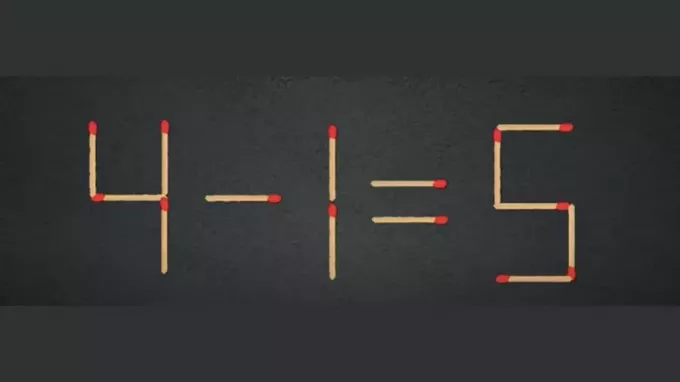If you like analytical games or mathematical challenges, you'll love this game that's all over the internet. It is about a puzzle of the matchstick in the equation. And then, are you up for it? Get your stopwatch ready right now and check out this challenge to assess your speed in solving the equation by moving just two matchsticks. It's possible!
Read more: The animal you see first in this image reveals something surprising about your personality!
see more
Use coffee grounds to unclog your kitchen drain; know how
Astrology and genius: THESE are the 4 most brilliant signs of…
A lot of people love math, but other people hate it and avoid it whenever they can. Either way, we guarantee that this equation is simple and you'll have fun trying to find the answer. Plus, it's an excellent way to exercise your brain's agility.
You will need to use your cognitive skills to complete this challenge. In this sense, the rules for carrying out the test are: move only two matchsticks to correct the equation in the image below. Ah, but there is one detail: this must be done within 20 seconds. And then, can you do it? Good luck!

Are you the new record holder or will you need a little more time? Well, if you've already found the riddle's answer, congratulations on your performance. You really are a quick minded person! However, it may not have succeeded, right? Don't be sad, because we will explain what were the necessary modifications to solve the equation.
.
.
.
To find the correct result it was enough to move one of the matchsticks from number 4 to form a 7, then it would be necessary to form a 6 by moving another matchstick from 5 to make it 6. After that, the equation would be 7-1=6. Simple, isn't it?!

This is a challenge involving the most basic form of math. If you have children at home, this type of game can be a great way to make them practice what they are learning at school.
It is very important to present ludic alternatives to facilitate the understanding of the contents and stimulate learning, therefore always use this kind of artifice, not only with children, but in your own studies to exercise your mind and learn things new.